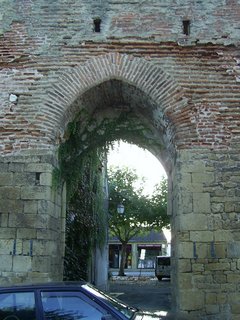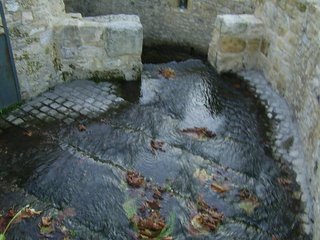Earliest records of names show that Lalinde started off as Castrum de la lynde in 1270, then La Lindia in 1289, la Linda in 1351, and even Villa Lindeye in 1316 ( villa meaning a town protected by a wall and gate).

Linda is the occitan (the original local language of the Aquitaine - still taught and still spoken) for source , the spring which still runs as clear and pure as it did hundreds of thousands of years ago.

In 1267, Prince Edouard, oldest son of Henry III Plantagenet and Governor of Guyenne, founded the Bastide as we know it today. The bastide was built by a Frenchman, Jean de Grailly, the senechal of Guenne, who was the direct representative of the king of England.
During its long history -- and because of its strategic positioning on the river -- the only place in the Dordogne where the river is ever low enough to forge it, -- and especially during the 100 - year war, Lalinde withstood many sieges, the plague, a complete flooding, a destructive fire. And it was during the WWII that the citizens of Lalinde once more demonstrated their courage and their invincible belief in the freedom of the individual, to the cost of each one of the inhabitants -- when all the young were massacred on 14 June 1944 for the town's important role in the Resistance. Lalinde also became one of the towns in the area which was randomly bombed and burned as revenge against the iron willed people who fought in the Resistance in this region.








